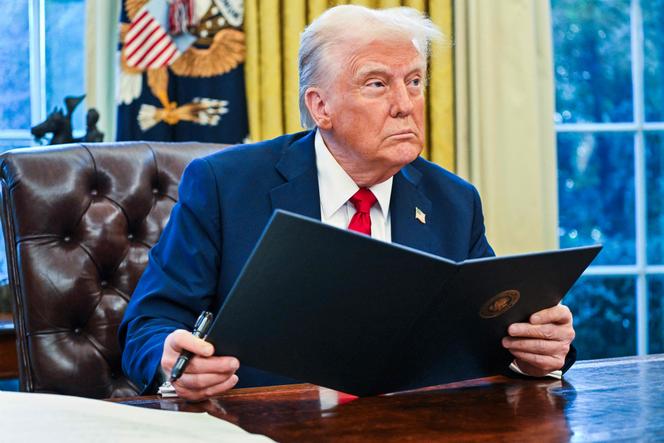President Donald Trump will impose tariffs on Saturday, February 1, on the United States’ three largest trading partners – Canada, Mexico and China – the White House said, sparking concern for global trade.
Trump has reiterated plans for 25% tariffs on neighbors Canada and Mexico on Saturday, unless they cracked down on illegal migrants crossing the US border and the flow of deadly fentanyl. He was also threatening an additional 10% customs duty for Chinese goods on the same day, similarly over the drug. “The February 1st deadline that President Trump put into place at a statement several weeks ago continues,” White House spokeswoman Karoline Leavitt told reporters Friday.
She added that the issue remains the flow of illegal fentanyl. Many times more powerful than heroin, the drug has been responsible for tens of thousands of overdose deaths a year.
Beijing has rebuffed claims of its complicity in the deadly trade, while close US ally Canada has countered that below one percent of undocumented migrants and fentanyl entering the United States comes through its northern border.
Readiness to respond
Tariffs are paid by US businesses to the government on purchases from abroad and the economic weight can fall on importers, foreign suppliers or consumers. A tariff hike would shock both industrial buyers and consumers.
Trump had said he was weighing issuing an exemption for Canadian and Mexican oil imports, but Leavitt said she had no information to share on the president’s decision on any potential carveouts. Speaking to reporters later in the Oval Office, Trump suggested he would lower the tariffs on oil, but it was unclear if it would pay lower duties from the start.
“I’m probably going to reduce the tariff a little bit on that,” Trump said. “We think we’re going to bring it down to 10%.”
The United States imported almost 4.6 million barrels of oil daily from Canada in October and 563,000 barrels from Mexico, according to the Energy Information Administration. US daily production during that month averaged nearly 13.5 million barrels a day.
Canadian officials had said Ottawa would provide pandemic-level financial support to workers and businesses if US tariffs hit, vowing their readiness to respond.
New
Le Monde’s app
Get the most out of your experience: download the app to enjoy Le Monde in English anywhere, anytime
Download
Mexican President Claudia Sheinbaum said Friday that her government was in close contact with Trump’s administration.
Trump was also mulling more tariffs on Chinese goods. On the campaign trail, he raised the idea of 60% or higher levies on Chinese imports. Beijing has vowed to defend its “national interests,” and a foreign ministry spokeswoman previously warned that “there are no winners in a trade war.”
Trump, on Friday, also said he was “absolutely” going to impose tariffs on the European Union in the future.
“Am I going to impose tariffs on the European Union? You want the truthful answer or shall I give you a political answer? Absolutely. The European Union has treated us so terribly,” Trump told reporters in the Oval Office.
Meanwhile, Trump said there is “nothing” China, Canada and Mexico can do to prevent tariffs.
